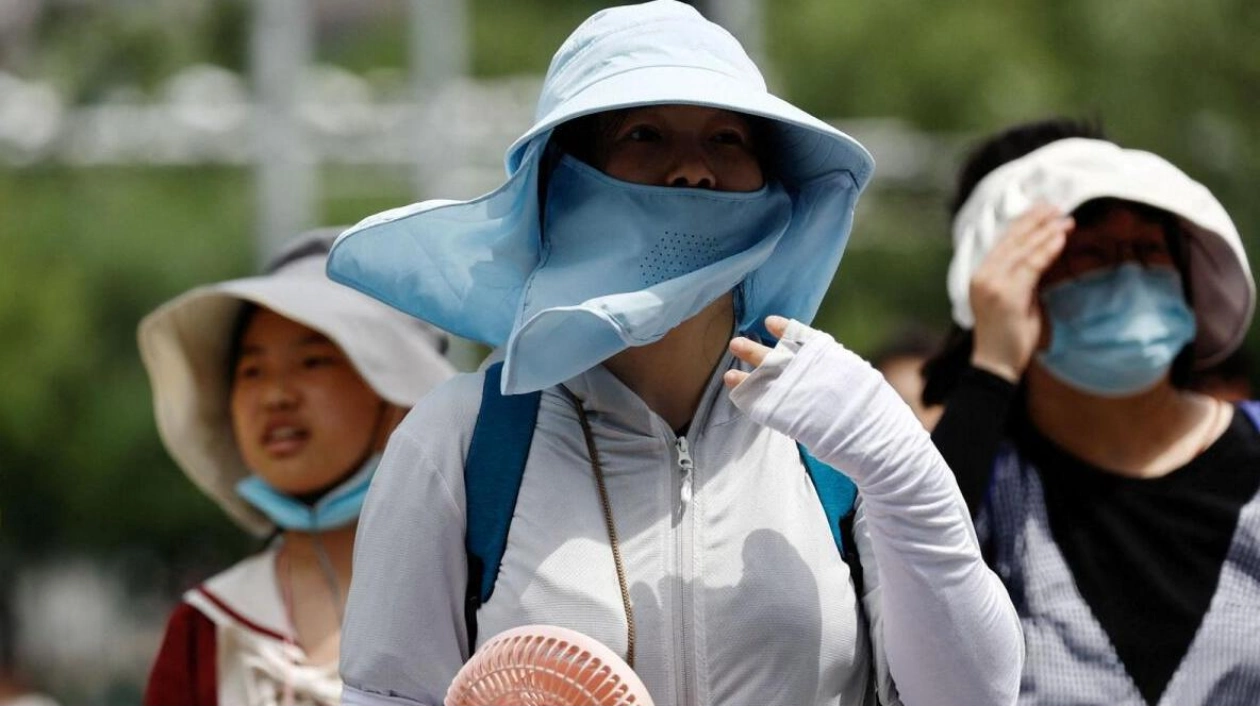The weather bureau cautioned on Thursday that China is experiencing more intense and prolonged heatwaves, along with increasingly frequent and unpredictable heavy rainfall due to climate change, as the nation prepares for another sweltering summer. In its yearly climate publication, the "Blue Book," the China Meteorological Administration (CMA) alerted that maximum temperatures nationwide might increase by 1.7-2.8 degrees Celsius over the next three decades, with eastern China and Xinjiang in the northwest facing the brunt of these changes. Last year, the country saw record-high average temperatures, resulting in unprecedented glacial retreat and melting permafrost in the northwest, as detailed in the Blue Book.
China identifies itself as one of the most climate-vulnerable countries globally and is under mounting pressure to adjust to the swift shifts in weather patterns and rising sea levels, which are escalating faster than the global average. "China is a region highly sensitive to global climate change, where the effects will be profound," stated Yuan Jiashuang, the vice-director of the CMA's National Climate Centre, during a briefing. She cautioned that if emissions continue at high levels, extreme heat events that are predicted to happen once every 50 years in China could occur bi-annually by the end of the century, with rainfall potentially doubling and becoming more erratic.
The weather bureau announced on Thursday that it anticipates relatively high temperatures across most of China in the coming months, indicating another consecutive summer of extreme heat. "The weather is becoming more extreme compared to previous years," commented Chen Yuhan, a resident of Shanghai, China's commercial hub, which experienced temperatures above 38 degrees Celsius on Thursday. "It's always a shock when I step outside." Heavy rains and floods are already affecting the south, while record temperatures have been observed in several parts of northern and central China, posing threats to crops and straining electricity grids. Official data reveals that average temperatures from March to May reached their peak since record-keeping began in 1961. Last month's record-breaking heatwave scorched key grain-producing provinces in the northwest and east, delaying corn planting, while heavy rains elsewhere inundated soybean and rice fields.
"It is crucial to mitigate the risk of reduced yields in cotton, early rice, and late rice due to heat damage," emphasized Jia Xiaolong, the CMA's deputy director, during the briefing. The CMA forecasts that summer temperatures in regions including Zhejiang, Jiangxi, Hunan, Fujian, Guangdong, Guangxi, Gansu, and Ningxia will be one to two degrees Celsius above average. Additionally, the weather bureau noted that two typhoons could hit mainland China in July, expected to travel westward or northwestward. Last year, the powerful typhoons Doksuri and Haikui made landfall, bringing record rains, floods, and widespread evacuations.






